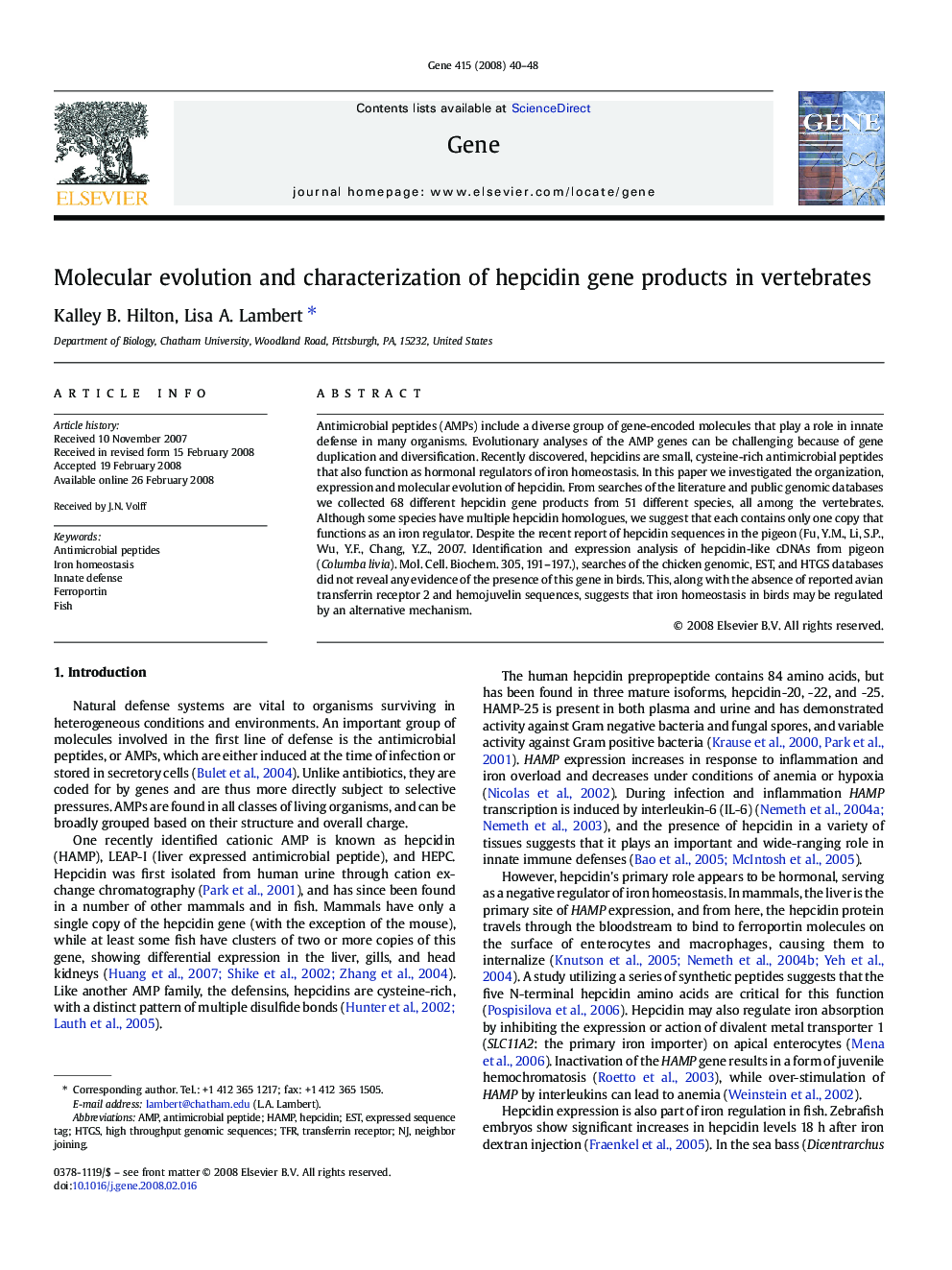| Article ID | Journal | Published Year | Pages | File Type |
|---|---|---|---|---|
| 2819224 | Gene | 2008 | 9 Pages |
Antimicrobial peptides (AMPs) include a diverse group of gene-encoded molecules that play a role in innate defense in many organisms. Evolutionary analyses of the AMP genes can be challenging because of gene duplication and diversification. Recently discovered, hepcidins are small, cysteine-rich antimicrobial peptides that also function as hormonal regulators of iron homeostasis. In this paper we investigated the organization, expression and molecular evolution of hepcidin. From searches of the literature and public genomic databases we collected 68 different hepcidin gene products from 51 different species, all among the vertebrates. Although some species have multiple hepcidin homologues, we suggest that each contains only one copy that functions as an iron regulator. Despite the recent report of hepcidin sequences in the pigeon (Fu, Y.M., Li, S.P., Wu, Y.F., Chang, Y.Z., 2007. Identification and expression analysis of hepcidin-like cDNAs from pigeon (Columba livia). Mol. Cell. Biochem. 305, 191–197.), searches of the chicken genomic, EST, and HTGS databases did not reveal any evidence of the presence of this gene in birds. This, along with the absence of reported avian transferrin receptor 2 and hemojuvelin sequences, suggests that iron homeostasis in birds may be regulated by an alternative mechanism.
